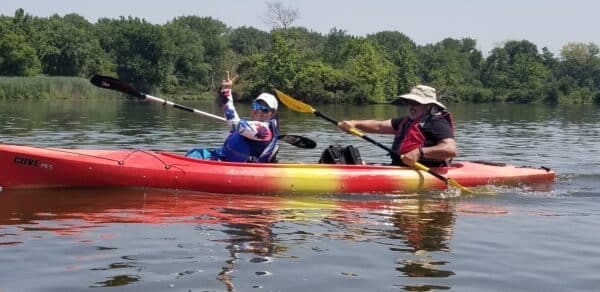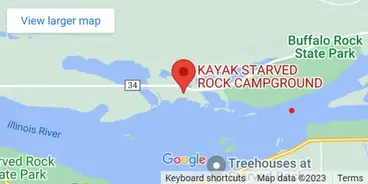kayaking directions
Kayak Starved Rock Campground NEAR CHICAGO
facebook.com/kayakstarvedrockcampground
kayakstarvedrock.com/online-booking/
Kayaking is a great way to explore and enjoy the natural beauty of our planet’s waterways. Whether you’re an experienced paddler or a beginner, it’s essential to know the proper directions for kayaking to ensure a safe and enjoyable experience. In this article, we’ll explore the fundamental kayaking directions you should follow.
- Getting into the kayak:
The first step is to carefully approach the kayak and check that it is stable. Place one hand on the kayak’s cockpit rim and the other hand on the paddle shaft, then carefully lower yourself into the kayak. Keep your weight centered over the seat and distribute it evenly to prevent tipping.
- Holding the paddle:
To hold the paddle correctly, place your hands on the shaft, shoulder-width apart, and make sure that the concave part of the paddle faces you. Your knuckles should be aligned with the blade’s edge facing away from you. Hold the paddle with a loose grip to avoid wrist strain and to be able to paddle efficiently.
- Forward stroke:
The forward stroke is the most basic kayaking stroke, and it is used to propel the kayak forward. To perform a forward stroke, start by dipping the blade of the paddle into the water as far forward as possible, then pull the blade backward towards the back of the kayak. Rotate your torso and engage your core muscles to power the stroke. Alternate sides to keep your kayak moving forward.
- Reverse stroke:
The reverse stroke is used to stop or slow the kayak down. It’s similar to the forward stroke, but you pull the blade towards the front of the kayak instead of the back. Make sure to keep the paddle close to the kayak to avoid hitting the side of the kayak with the paddle blade.
- Sweep stroke:
The sweep stroke is used to turn the kayak. To execute a sweep stroke, start with the blade behind your hip, then use your torso to pivot the blade outwards in a wide arc. This motion creates a broad stroke that turns the kayak in the direction of the stroke.
- Draw stroke:
The draw stroke is used to move the kayak sideways. To perform a draw stroke, place the blade in the water next to the kayak, then pull it towards the kayak’s side. This motion pulls the kayak towards the paddle blade.
- Steering with the rudder:
Some kayaks come with a rudder, which can be used to steer the kayak. To use the rudder, turn the foot pedals to move the rudder to the desired side. This motion will steer the kayak in the corresponding direction.
In conclusion, these are the essential kayaking directions you should follow when kayaking. It’s crucial to remember that safety should always be your top priority when on the water. Always wear a life jacket, and make sure to check weather conditions and the water’s current before heading out. With these directions and some practice, you’ll be well on your way to enjoying an unforgettable kayaking experience.
The Illinois River Valley is a region in the United States that spans the state of Illinois, from the Chicagoland area in the north to the Mississippi River in the west. The river itself is 273 miles long, flowing southward through the state, and it is an important source of water and transportation for the region.
The Illinois River Valley is a region with a rich history, beginning with the Native American groups who first inhabited the area. The Illinois River was a major trading route for the groups, and many of them settled along its banks. European explorers, including Marquette and Joliet, also traveled through the area, marking the beginning of a new era for the Illinois River Valley.
As settlers moved into the region, the Illinois River became an important mode of transportation for goods and people. The river was used to transport coal, timber, and agricultural products, and it was a crucial link in the transportation network between the Midwest and the Gulf of Mexico.
Today, the Illinois River Valley is still an important region for agriculture, with corn and soybeans being the primary crops. The region is also home to a number of large cities, including Peoria, Bloomington, and Joliet. These cities are centers of industry and commerce, with manufacturing and logistics being important drivers of the local economy.
The Illinois River itself is a major draw for outdoor enthusiasts, offering opportunities for boating, fishing, and birdwatching. The river is home to a number of fish species, including catfish, bass, and carp, and it is an important migration route for birds, making it a popular spot for birdwatchers.
The Illinois River Valley is also home to a number of historic sites, including the Lincoln Home National Historic Site in Springfield, the Cahokia Mounds State Historic Site in Collinsville, and the Old State Capitol in Springfield. These sites offer a glimpse into the region’s rich history and cultural heritage.
Overall, the Illinois River Valley is a region with a rich history, vibrant culture, and diverse economy. It is a region that has faced challenges in the past, but with a commitment to sustainability and preservation, it will continue to thrive for generations to come.





